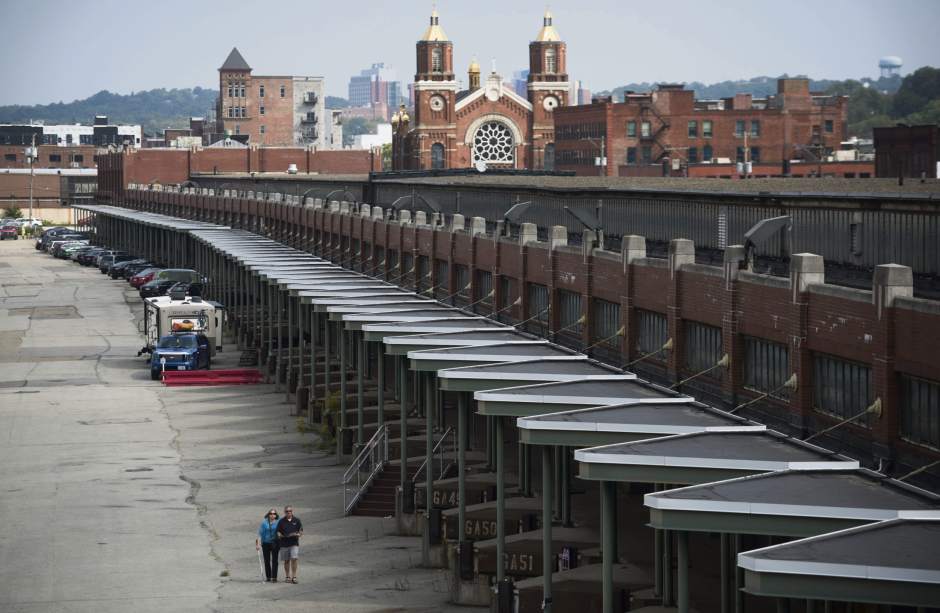https://archive.triblive.com/local/pittsburgh-allegheny/pittsburghs-produce-terminal-project-moves-forward/
Pittsburgh's Produce Terminal project moves forward

Andrew Russell | Tribune-Review
The back of the Strip District's landmark Produce Terminal is shown in this file photo from September 2016.
A Chicago developer's plans for a $63 million makeover of the Strip District's historic Produce Terminal cleared several major hurdles on Wednesday.
Pittsburgh City Council unanimously voted to advance legislation that would permit McCaffery Interests to lease the terminal from the city's Urban Redevelopment Authority for $2.5 million and 99 years, with a purchase option kicking in after 15 years.
Legislation would permit rezoning the terminal property and allow the URA to seek tax increment financing and state and foundation grants to make improvements on adjoining Smallman Street.
Council, which unanimously voted in favor of the bills, is expected to schedule a final vote for Tuesday.
McCaffery representatives said the approvals are needed to move ahead with permitting, engineering and design work for the 1,500-foot building. They could not provide a timeline for construction but said it probably wouldn't begin this year.
Pamela Austin, a senior project manager for McCaffery, thanked the Mayor's Office, URA and City Councilwoman Deb Gross of Highland Park, who represents the Strip, for helping to advance the project.
“We're very pleased that City Council has taken these actions to help move this project forward,” Austin said.
McCaffery, which will pay the lease in three installments, has proposed a “food centric” concept with a large public market on the west end of the building and space throughout for small local vendors specializing in foods and crafts. The Society for Contemporary Craft, a nonprofit specializing in arts, will remain.
Plans call for three pedestrian portals through the building so people can access the Allegheny River behind it.
McCaffery plans to transform a former telecommunications cable factory across the street at 1600 Smallman into offices with ground-floor space for stores. The four-story building includes two annexes and originally housed the Standard Underground Cable Co. founded by George Westinghouse.
Smallman Street improvements ranging from $10 million to $20 million could include “gathering spaces” and a plaza, according to Kevin Acklin, who chairs the URA board. Acklin, who also serves as Mayor Bill Peduto's chief of staff, said the street is unsafe for pedestrians and bicyclists.
“Right now, it's this broad mass of pavement with a yellow line in the middle and every man and woman for themselves,” Acklin said.
The Pennsylvania Railroad built the terminal in 1929 as a loading dock for trains and trucks. The URA has owned it since 1981 and has been negotiating with developers for more than a decade.
Bob Bauder is a Tribune-Review staff writer. Reach him at 412-765-2312 or bbauder@tribweb.com.
Copyright ©2025— Trib Total Media, LLC (TribLIVE.com)
